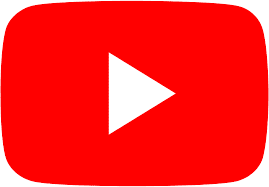YouTube content is a huge medium for small business to create a strategy for.
With the amazing results that video can deliver, most small businesses can’t afford to miss this medium.
However, because most small businesses aren’t content creators by default, they have a little trouble determining what their YouTube content strategy should be.
But video is worth learning.
The results it gets are too big to ignore.
So today I’ve got a few rules you want to be included in your YouTube content strategy.
Contents
Your YouTube Content Strategy Will Break Without A Goal
Like any other content strategy, you need to know what you want to accomplish.
You can’t just produce random videos with no goal in mind.
When you don’t set a goal, you’ve got no direction and you wind up rambling unnecessarily.
Your video bombs.
Before you hit record, you need to know what you’re going to talk about and what you want your audience to do with it.
You need to determine the result of that video.
What do you want your audience to do once it’s done?
Make sure you’ve got a call-to-action in the video that instructs your audience on the next step.
And, most importantly, make sure your video builds towards the goal in a logical way.
By building up the ideas first, you will convert leads or sales much easier.
YouTube Content Success Can Be A Part Of Your Strategy
You can plan your YouTube content strategy to be successful.
If you understand what goes into YouTube success you can include it.
Start with the basics:
- Content your audience finds value in
- A format that works well for your topic
- Patience to wait for results
From there, you can work these rules into your YouTube content strategy.
They’ll help you create huge success.
All you’ve got to do is take a minute to make sure you understand them.
Then use them.
These 11 rules are going to make your YouTube content strategy better.
Put A Schedule In Place
One of the first things you need to understand about YouTube is that consistency matters if you want their algorithm to favor you.
But if you’re going to consistently produce videos, you’re going to need a schedule to do so.
By giving yourself deadlines, you’re more likely to take the time needed to record, edit, and upload as often as you need to.
And, because all those steps take time, you need to set some aside every week to record.
Plan space to record and edit at least 1 video every week.
That doesn’t mean you’ll need to record every week, though.
You can conceivably record 4 videos in one day, providing you enough content for a month.
Hopefully, you’ll be able to produce more than one video per week, though, because recent reports show that channels who post content more than once per week perform better.
Ideally, you’ll post every day.
However, you should focus on what you can handle.
It’s more important to provide good value and build a real audience than it is to try to play to the algorithm.
Plan A System To Produce Videos
Like I already said, video production is time-consuming.
The more time it takes to finish production, the harder it’s going to be to grow your YouTube channel.
Your ability to produce consistent and semi-frequent videos are what keep your audience returning.
That means you need to select the content that you can create often and simply.
You also need a few tricks to make your editing process easier.
There are a few basics that typically work.
- Set up a small recording studio to reduce setup time.
- Create a video template that you’ll use for the editing process.
- Make sure you have all the right production tools for what you’re trying to do.
What’s most important is that you find ways to reduce the time it takes without sacrificing quality.
As you refine and adjust your process, you’ll find you can save more time and effort.
By continuing to streamline your process, you’ll be able to produce quality content more often.
That’s going to allow you to benefit from YouTube’s algorithm.
Grab Your Audience’s Attention Quickly
Attention spans are notoriously short.
In fact, the average person will only give about 15 seconds to anything that doesn’t interest them.
Which means you have a very short amount of time to get their attention attached to your video.
Open your video with a great hook.
Find a way to instantly connect with the reason they might have clicked on your video.
Doing a tutorial? Start with the result.
Educating them on a topic? A “what-if” question might make the most sense.
Not sure where to go first? Tell a story that leads to the video you created.
No matter what you do, it’s important to connect with them quickly.
By letting your audience know exactly what to expect from your video you can pique their interest.
However, don’t give away all the goods too soon!
You’ve got to give them something to stick around for.
Set up expectations early and deliver the gold later.
Most importantly, don’t ever be deceptive.
If you start off-topic then switch it up, your audience will leave.
That tactic usually only works with YouTubers who have an established audience and a ton of built-up trust.
Stick to the point and make it clear in the beginning.
Build your rapport with your intended audience early.
That’s going to get them looking for your other videos.
You Don’t Need A Long Opening Sequence
After you’ve caught your audience’s attention with a great hook, the last thing you want to do is lose it.
I think we’re running with a short attention span theme here, aren’t we?
However, your opening sequence can do exactly that if it’s too long.
It’s also something that discourages people from watching multiple videos because, unlike Netflix, you can’t skip the title sequence on YouTube.
If your sequence is too long, you’ll lose more views.
That’s going to hurt your rankings and your results.
Instead of some long sequence, add in something nice and short.
Make it memorable and impactful.
Use quick animation and transition and keep your music or sound effects brief.
For example, our title sequence used to be longer.
It ran about 20 seconds and didn’t follow any kind of introduction.
Now we start with a quick intro to the video followed by a 6-second title sequence.
Our watch time has increased by 38% as a result.
More people are making it further through our videos and getting to our calls-to-action.
Which is exactly what you want from the video content you produce.
Cut The Distractions
You need your video viewers to stay for as much of your video as possible.
Especially when you have something at or near the end that you need them to see.
Obviously, you have the option to entice them by telling them right at the beginning, but that’s not going to be enough if they forget what they’re watching.
That’s why you need to keep the video distractions to a minimum.
If you’ve got long pauses or you spend too much time on a topic without adding value, edit it out of your final cut.
Don’t force your audience to sit through wasted video space.
In line with that, make sure you’re staying on topic and treating it with as much excitement as possible.
If you can avoid confusing them or outright boring them, they’re more likely to stay.
They won’t usually click away unless you give them a reason.
Jump-cuts or transition animations are a good way to bridge the gap left when content is cut.
You don’t even need multiple cameras to do it.
When it’s an obvious jump cut, it can become artistic.
It’s a great way to keep things fast-paced and cut out all the extra.
That’s going to keep your audience engaged better.
Create Custom Thumbnails That Attract Attention
Ever click on one of the suggested videos because the thumbnail looked interesting?
Of course. We all have.
The fact is that your video’s thumbnail can make or break your videos.
And it’s because of that truth about suggested videos.
The number one way people are going to find your content is through YouTube’s suggestions.
When they’re watching another video, you need yours to stand out on the right side among the other suggestions.
Videos that appear in the suggested list are essentially backed by YouTube’s opinion.
They tell a viewer that your video is something they might enjoy.
If the user takes the suggestion of your video, it tells YouTube that your video is likely to keep people on the site.
That’s what YouTube wants, so they’ll show your video to more people.
Like anything else about your video, make sure you give people what your thumbnail says you will.
Dishonesty won’t help if it winds up lowering your watch time, which is YouTube’s most valued metric.
Use your thumbnail to create curiosity.
Make people want to click on it to find out what makes the thumbnail’s story relevant.
Also, you have to remember that the thumbnail is only going to be seen in a small format.
Design with that in mind if you want your audience to see everything.
Be consistent with your thumbnail design so people know it’s yours, too.
That consistency is going to create a habit for your audience.
Most importantly, your thumbnail needs to connect.
Generating an emotional response that people respond to, like excitement, makes them want to join in.
If you can handle those ideas, you’ll get a great response and get seen in suggestions more often.
Do More Of What’s Working For You
Once you start producing YouTube content, you’ll start to collect data.
Quality content depends on great data, and YouTube is no exception.
You will, inevitably, produce videos that see more success than others.
It’s that success that you want to duplicate and build upon.
Jump into your YouTube analytics to find out which videos earn you more subscribers and more engagement.
Find out what they have in common.
Look at the subjects you cover, the way you cover them, and the way you edited the video to see why they might work better.
Once you figure out why the videos are working, do more of it.
It seems like a simple, common-sense idea.
However, it’s all too common for creators to publish and forget.
As a result, they fail to refine their consistency, costing them the opportunity to appeal to more of their audience.
There is nothing that can replace research in what your audience cares about.
That’s the secret to all great content.
Especially the kind that can engage your viewers.
The Longer The Video, The Better The Result
With all we’ve said about short attention spans, you might think it’s a good idea to produce shorter videos.
Indeed, for some time a shorter video was considered better.
However, despite the goal of keeping title and credit sequences short, it’s best to lengthen your videos.
Longer videos equal longer watch times.
YouTube’s most prized metric is the viewer watch time.
The longer your videos can keep a viewer on the site, the more YouTube likes you.
The simple reason is that they can sell more ads that way.
But use caution: if your video is unnecessarily long, it will be counterproductive.
Videos that last longer than they need to have excess content.
The kind of content that bores viewers.
Obviously, if they’re bored, they won’t stick around.
Said directly, you need to cover your topic completely without droning on.
Most of the time a video between 7 and 15 minutes does well.
However, if your topic warrants it, 20-30 minutes can still do well.
The key is that you be as creative as possible about your content.
Hold YouTube Live Streams (When It Makes Sense)
Live streams have been doing amazing things for business since Periscope released in 2015.
The medium allows you to make an instant, face-to-face connection with your audience.
On top of that, it’s also one of the best ways to create a ton of video content without costing too much time.
Unlike a pre-recorded video, live streams require you to be a little better-skilled about your content.
You don’t have the opportunity to edit out bloopers or reshoot a mistake.
That gives the platform a little steeper learning curve.
However, once you get it down, live streams are the easiest form of video content.
Thankfully, live streams are something that you can use on most platforms, and the process isn’t any different.
It’s a format that allows you an amazing opportunity to communicate live with your audience through the comments, allowing better engagement opportunities.
People also tend to watch them longer than regular video.
Both are a win for your content strategy.
YouTube Live, unlike other platforms, has a catch.
You can only live stream from your webcam until you reach 1,000 subscribers.
At that point, YouTube considers you eligible to stream from your phone.
Not to worry!
Most laptops have a built-in webcam, so you likely already have what you need to make it happen.
And, provided you’re doing a great job at promoting your channel, you should be able to earn 1,000 subscribers more quickly than you imagine.
Just make sure you learn what you need to do to make your live stream a success before you jump into this video format.
Take YouTube’s Three-H Advice
YouTube wants video watchers to stay on the site for the longest time possible.
That means any advice they offer to help you make better, more engaging content is worth listening to.
Advice like that gets YouTube what it wants and avoids its creators trying to game the system.
Their “Hub, Hero, Help” strategy is exactly that.
According to this strategy, whenever you produce a video, you should focus on one of three goals.
The video should either serve your channel’s audience, be something they want to share, or perform well in search.
Hub videos are all about the community.
They’re an attempt to build the connection between you and your audience and among the members of your audience.
Content in your hub videos might include responding to comments, answering questions, live broadcasts, or any other kind of video that helps fans connect more intimately with you and your channel.
Hero videos are the ones that hold up the rest of the channel.
Videos like this are designed for creating more reach, especially through shares.
You might make videos that cover holidays or news events, pop-culture happenings, or anything else that might be “hot” right now.
Extra effort is paramount for hero videos so you’ll have a better chance of getting a share or that it may be picked up by other media outlets.
Help videos are all about showing the audience how to do something.
Search results are the goal for this content.
Covering walkthroughs, advice, or anything else that teaches your audience to achieve something will help you the most here.
Think about the answers your audience needs and make videos revolving around that.
Promote Your Videos The Right Way
With all content, promotion is everything.
You need to leverage all your opportunities to get your video in front of more people.
That’s doubly true if your primary content is video.
Thankfully it’s a medium that translates well to any content platform.
But that doesn’t mean you should simply post your video on every social network.
Instead, you’ll want to carve each of your videos into an appropriate size, length, and format for each channel.
Take poignant clips from your primary video and share them out to social platforms.
Link back to the YouTube video from those clips.
Try to spark interest in your longer video without revealing everything about it.
At the same time, make sure you’re providing enough value that they have a reason to feed their curiosity.
It’s also effective if you can add a little more context to the segment you share, offering your audience a deeper understanding of that portion of the video.
When you collaborate, make sure you place that collaborator at the forefront of your video.
Add their name to the title, tags, and video description.
Mention them in your micro content.
And make sure you credit their channel.
They’ll do the same, exposing you to their audience.
Through all this exposure, you’ll be sure to draw attention to your video.
Build Your YouTube Content Strategy Right
By following these 11 rules, your YouTube content strategy will help your channel take off.
Stick to them, learn from your audience, and stay consistent.
When you do, you can’t fail over time.
Yes, it’s going to take patience.
However, adding video to your existing content marketing can help your business see huge results.
And, by keeping to these rules, your content will play to the algorithm and to your audience.
That means more visibility, more clicks, and more conversions.





